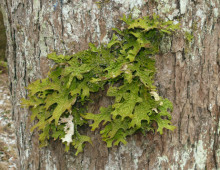What’s the News: Melting permafrost in a warming world could mean lots of greenhouses gasses, especially methane, released into the atmosphere. But it also means an unusual community of soil bacteria coming out of hibernation, so to speak. A new study looks at what those permafrost microbes do, exactly, as their environment warms up. Read…
Permafrost soil metagenome study in Time
One of those wild cards is the 1,672 billion tonnes of carbon equivalent trapped in the form of methane in the Arctic permafrost, the soils kept frozen by the far North’s extreme temperatures. Methane is a powerful greenhouse gas—it has 20 times the warming effect of carbon dioxide—and the total amount of carbon equivalent in…
Permafrost soil metagenome study on LiveScience
“Nobody has looked at what happens to microbes when the permafrost thaws,” said Janet Jansson, a senior staff scientist at Lawrence Berkeley National Laboratory in California. She led a study that recorded what happened when chunks of Alaskan permafrost thawed for the first time in 1,200 years. Read more on LiveScience
Permafrost soil metagenome study in UK Press Association
At the testing laboratories, US researchers extracted almost 40 billion elements of raw DNA, reflecting high microbial diversity in the soil.The scientists were also able to piece together the genetic code, or genome, of a previously unknown methane-producing “methanogen” that was present in large numbers. Reporting their findings in an early online edition of the journal…
Permafrost soil metagenome study in GenomeWeb
“Currently in climate models, it’s not really taken into account adequately what the microorganisms are doing,” senior author Janet Jansson, a researcher affiliated with the Lawrence Berkeley National Laboratory and the US Department of Energy’s Joint Genome Institute, told GenomeWeb Daily News. “The hope is to get enough information at the microscopic level that we’ll have…
Preparing for a Thaw: How Arctic Microbes Respond to a Warming World
WALNUT CREEK/BERKELEY, Calif.—From the North Pole to the Arctic Ocean, the frozen soils within this region keep an estimated 1,672 billion metric tons of carbon out of the Earth’s atmosphere. This sequestered carbon is more than 250 times the amount of greenhouse gas emissions attributed to the United States in the year 2009. As global…
DOE JGI science in the Washington Post
JGI director and geneticist Eddy Rubin is a pioneer in the field of “metagenomics,” the study of how the DNA in many creatures can work together to create ecosystems. Right now, he and his team are studying microbes that live in a cow’s rumen, the stomach-like organ that the animals use to break down grasses…
A metagenomic approach to analyzing rice endophytes
During the call for 2012 proposals for the DOE JGI’s Community Sequencing Program, one of the areas of focus researchers were asked to consider was that of plant-microbe interactions. Microbes that live in plants or in the rhizosphere where plant roots and soil interact can play crucial roles in plant health. This is of particular…
CSP 2012 announcement in GenomeWeb Daily News
The Department of Energy’s Joint Genome Institute has chosen 41 research projects out of 152 applicants to use its sequencing services under its 2012 Community Sequencing Program, JGI said Thursday.Researchers for this year’s CSP program, which provides the scientific community with access to JGI’s high-throughput sequencing technologies, proposed projects to study plant-microbe interactions, how microbes…
Trillions Served: Massive, Complex Projects Dominate DOE JGI 2012 Community Sequencing Program Portfolio
WALNUT CREEK, Calif.—According to roadside signs, the number of burgers served has eclipsed the billion mark, while the U.S. Department of Energy (DOE) Joint Genome Institute (JGI) will now serve up trillions of nucleotides of information from scores of newly-selected projects geared to feed the data-hungry worldwide research community. The 2012 Community Sequencing Program (CSP)…

